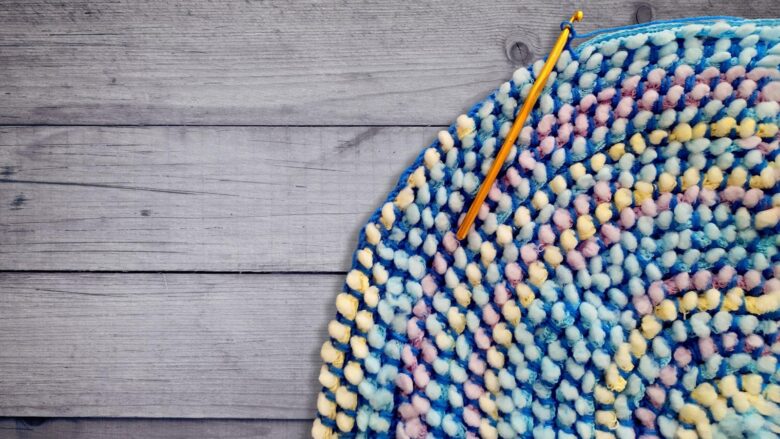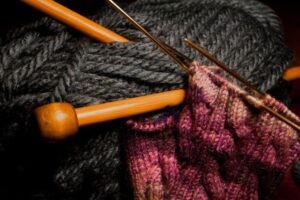Crochet is a beautiful craft that allows for endless creativity and personalization. One of the most exciting elements of crochet is the ability to incorporate a variety of colors into your projects. Whether you’re looking to add a pop of color or create a stunning color gradient, knowing how to change colors in crochet is an essential skill. In this article, we will explore different techniques and tips for seamlessly switching colors in your crochet projects. Let’s dive in and add some color to your creations!
Exploring the Color Wheel for Crochet Inspiration
When it comes to crochet, changing colors can add a whole new dimension to your projects. One way to do this is by using the color wheel as inspiration. By understanding how colors interact with each other, you can create beautiful and harmonious combinations in your crochet work.
Here are some tips for :
- Complementary colors: Choose colors that are opposite each other on the color wheel, such as red and green, for a bold and striking look.
- Analogous colors: Pick colors that are next to each other on the color wheel, like blue and purple, for a more subtle and harmonious palette.
- Triadic colors: Use colors that are evenly spaced around the color wheel, such as red, yellow, and blue, for a vibrant and dynamic combination.
Don’t be afraid to experiment with different color combinations to see what works best for your crochet project. The color wheel is a valuable tool for sparking creativity and helping you make informed decisions about color choices in your work.
Incorporating Variegated Yarns for Effortless Color Changes
Crocheting with variegated yarns can add a whole new dimension to your projects by effortlessly transitioning colors without the need for constant yarn changes. One way to incorporate variegated yarns into your crochet work is by utilizing different stitches to showcase the color changes. For example, using a simple single crochet stitch with a variegated yarn can create a beautiful striped effect as the colors naturally shift throughout the piece.
Another fun way to incorporate variegated yarns is by combining them with solid colors. By alternating between a variegated yarn and a solid color, you can create a visually appealing contrast in your crochet projects. This can be done by switching between the two colors every few rows or by creating stripes with the variegated yarn and using the solid color as a border or accent.
If you’re looking to add even more interest to your crochet work with variegated yarns, consider experimenting with different colorways and weights. Mixing different variegated yarns with complementary or contrasting color palettes can create a unique and eye-catching look in your projects. Additionally, playing with different weights of yarns can add texture and dimension to your work, making your crochet pieces truly stand out.
Mastering the Tapestry Crochet Technique for Intricate Colorwork
Tapestry crochet is a fascinating technique that allows crocheters to create intricate colorwork designs by carrying multiple yarn colors throughout the project. One key aspect of mastering this technique is knowing how to change colors seamlessly, so the color transitions in your work are smooth and neat.
When changing colors in tapestry crochet, it’s important to keep your tension consistent to ensure that the color changes are not too tight or too loose. Here are some tips to help you change colors effectively:
- Cut the yarn: Before changing colors, cut the yarn you are currently working with, leaving a tail of about 4-6 inches.
- Join the new color: To join the new color, simply pick it up and start crocheting with it in the next stitch, using the tail of the old color to secure the new color in place.
- Weave in the ends: After changing colors, weave in the ends of the yarn tails along the back of your work to hide them and secure the color changes.
Experimenting with Ombre and Gradient Color Schemes in Your Projects
When it comes to changing colors in your crochet projects, one fun technique to try is experimenting with ombre and gradient color schemes. This can add depth and dimension to your work, creating a beautiful and unique finished piece. Here are some tips for incorporating ombre and gradient colors into your projects:
- Start with a color palette: Choose a range of colors that transition smoothly from light to dark or from one color to another. This will help create a cohesive and harmonious look.
- Work with different stitch patterns: To enhance the ombre or gradient effect, experiment with different stitch patterns. Some stitches may blend colors together seamlessly, while others may create more distinct color changes.
- Blend colors gradually: When changing colors, try blending the new color with the old color for a few stitches to create a gradual transition. This will help create a smooth and cohesive look throughout your project.
Whether you’re working on a blanket, scarf, or sweater, incorporating ombre and gradient colors can add visual interest and elevate your crochet work to the next level. Experimenting with color schemes can unleash your creativity and enhance the overall aesthetic of your projects. So go ahead and play with different colors and techniques to create stunning and eye-catching crochet pieces.
Advanced Tips for Seamless Color Changes in Crochet Items
When changing colors in crochet projects, it’s important to do so seamlessly for a polished finish. One advanced tip is to use the invisible join method to blend colors together. To do this, cut the yarn leaving a tail, pull the end through the loop on the hook, and secure by weaving the tail into the back of the work.
Another technique for seamless color changes is the “standing stitch” method. This involves starting the new color with a standing stitch rather than joining with a slip stitch. By doing so, you eliminate the need for a slip stitch join, resulting in a cleaner transition between colors.
For projects with multiple color changes, consider using bobbins or butterfly wraps to keep yarns organized and prevent tangling. Bobbins are small spools that hold each color separately, while butterfly wraps involve creating loops with each color to easily switch between them. This method helps to keep your work neat and your color changes smooth.
To Wrap It Up
Whether you’re new to crochet or a seasoned veteran, changing colors can add a whole new dimension to your projects. With a few simple techniques and a bit of practice, you’ll be able to create stunning and intricate designs that are sure to impress. So grab your yarn, experiment with different color combinations, and watch your crochet projects come to life in vibrant and exciting ways. Happy crocheting!



